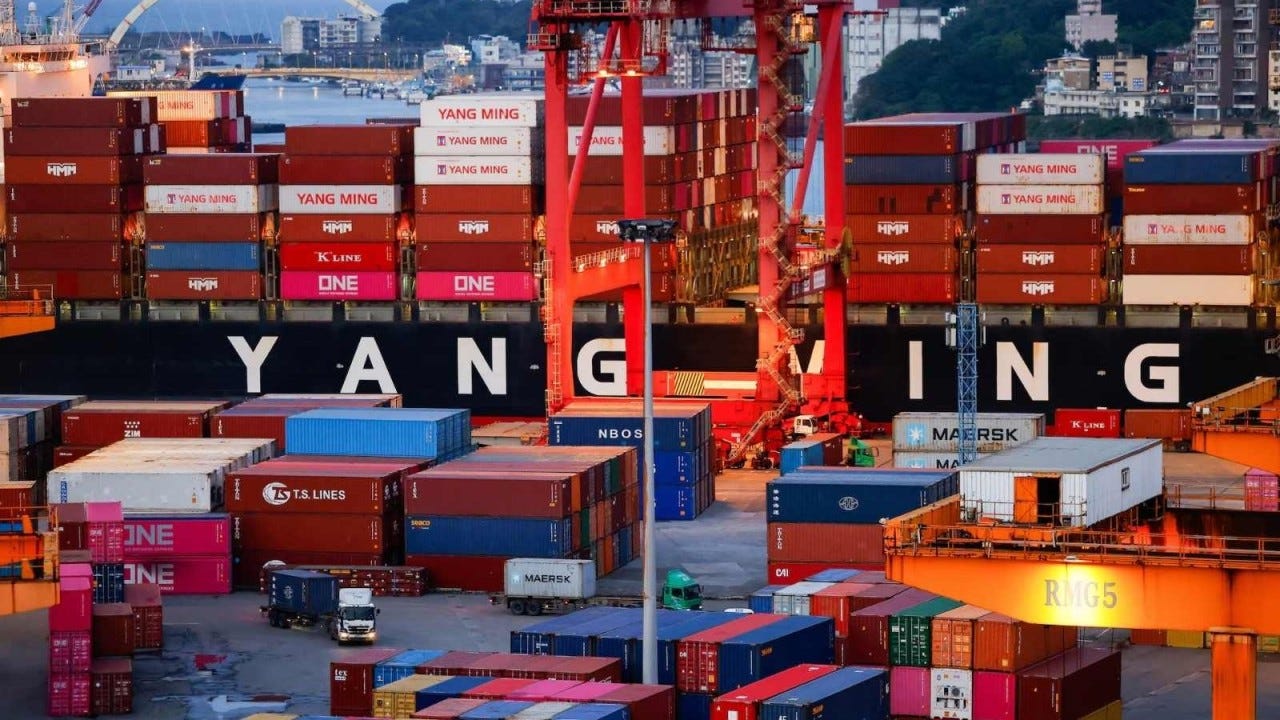Trump's Tariff Blow to Taiwan
Commitments of large-scale US investment as peace offerings ignored
By: Jens Kastner
Were Taiwan’s tech crown jewel TSMC and state-run oil refiner CPC Corp presented to tariff pressure maven Donald Trump, the US President, on a silver plate for nothing? Taiwan’s external trade nightmare came true on July 31 when the White House announced a 20 percent blanket tariff on Taiwan, 5 percent higher than those inflicted on the island’s head-on competitors Japan and South Korea.
That came despite commitments under political pressure by the island’s largest company, Taiwan Semiconductor Manufacturing Company (TSMC), and Taiwan’s state-run oil refiner CPC Corp to invest heavily in US-based semiconductor-manufacturing and upstream gas production. The administration of embattled President Lai Ching-te, who faces implacable parliamentary opposition, had vainly hoped to put Trump in a merciful mood and provide a psychological lift for his administration.
At the heart of Trump’s trade revolution is a tiered tariff structure: 15 percent for close allies (G7 members, South Korea and Australia possibly), 15–20 percent for strategic partners like Vietnam, the Philippines, and Indonesia, and harsher penalties – up to 50 percent – for countries deemed non-cooperative or economically adversarial (Brazil). Only the UK, thanks to a separate and earlier deal, managed to secure a 10 percent tariff ceiling.
The export competitiveness of Taiwan’s countless makers of machine tools, molds, plastic products, and electronic materials is predicted to suffer heavily from the 5 percent US import tariff gap between them and Korean and Japanese rivals. But matters have been exacerbated by Taiwan’s central bank in recent months, allowing the New Taiwan dollar, the island’s currency, to appreciate sharply against the US dollar. As a result, the NT dollar has soared more than 9 percent against the US currency since the beginning of this year, helping Trump fulfill his electoral pledge of making the US’s own exports competitive via weak US dollar exchange rates.
“Our export competitiveness is undermined by the tariff burden being higher than for our neighboring competitors and coupled with the appreciation of the New Taiwan dollar, the actual burden on exporters may reach up to 32 percent, further squeezing corporate profit margins,” said Alexander C. Huang, head of the Department of International Affairs of the Kuomintang (KMT), Taiwan’s main opposition party, in an interview with Asia Sentinel.
“Taiwan has proactively invested and collaborated with the US on semiconductor technologies and capacities, but the outcome – a fixed 20 percent tariff – may not adequately reflect the extent of Taiwan's industrial concessions.”
Huang went on to point out that details of agricultural and non-tariff trade barriers remain unclear and that it remains to be seen whether Taiwan’s military procurement agreements with U.S. arms makers can be expedited or adjusted through trade negotiations.
Although the Taiwanese government was quick to insist that the 20 percent deal is not final, it has declined to disclose details of its negotiations, with the latest news on Taiwan and Alaska being close to finalizing the largest liquefied natural gas (LNG) sale in Alaska's history – 6 million tons – obviously tied to this context.
Lai legislative disaster
Taiwan’s KMT-leaning media has contrasted Taiwan’s tame negotiation style with those of Japan and South Korea, portraying their 5 percent tariff advantage as being the fruits of Tokyo and Seoul’s insistence on protecting domestic interests.
The UDN daily, which supports the opposition Pan-Blue coalition, for its part alleged that the Lai administration has shrouded its broad concessions in secrecy, including lifting import restrictions on American beef offal and ground meat, so as to not turn lukewarm farming regions considered strongholds of the ruling Democratic Progressive Party (DPP) on a then-looming mass recall vote backed by the DPP.
The outcome of the “Great Recall Wave” was indeed disastrous for Lai on July 26, as it failed to unseat any of the 24 targeted lawmakers from the KMT, with Kao Hung-an, the suspended mayor of Hsinchu and a member of minor opposition party, the Taiwan People’s Party (TPP), also surviving her recall vote.
One day before the recall votes, the KMT-TPP parliament had rejected Lai’s seven judicial nominees for Taiwan’s Constitutional Court. The court had already been paralyzed since late 2024 because of KMT-TPP obstructionism, throwing Taiwan into a constitutional mess.
“The Lai government is trying to spin the 20 percent tariff rate as a partial victory because Taiwan got a tariff rate that is in the middle of the range, but people in Taiwan historically compare themselves economically to South Korea, so it doesn’t look good that Taiwan got a higher tariff than South Korea and Japan,” Denny Roy, a senior fellow at the US-based East-West Center think tank, told Asia Sentinel.
“Many people in Taiwan also complain that Taiwan had a poor negotiation team, that the process was non-transparent, and that Lai is trying to squelch criticism by threatening to sue anyone who shares ‘rumors’ about the negotiations, especially about how much Taiwan has agreed to invest in the US to satisfy Washington.”
Huang of the KMT, for his part, recommended that given Taiwan’s need for energy transition and independence, it should include cooperation or procurement of small modular nuclear reactor (SMR) technologies in the broader US-Taiwan trade framework as part of a long-term industrial and energy strategy.
He furthermore urged the Lai administration to issue universal cash payments and increase public spending to stimulate domestic demand and ensure short-term economic stability.



100% biased.